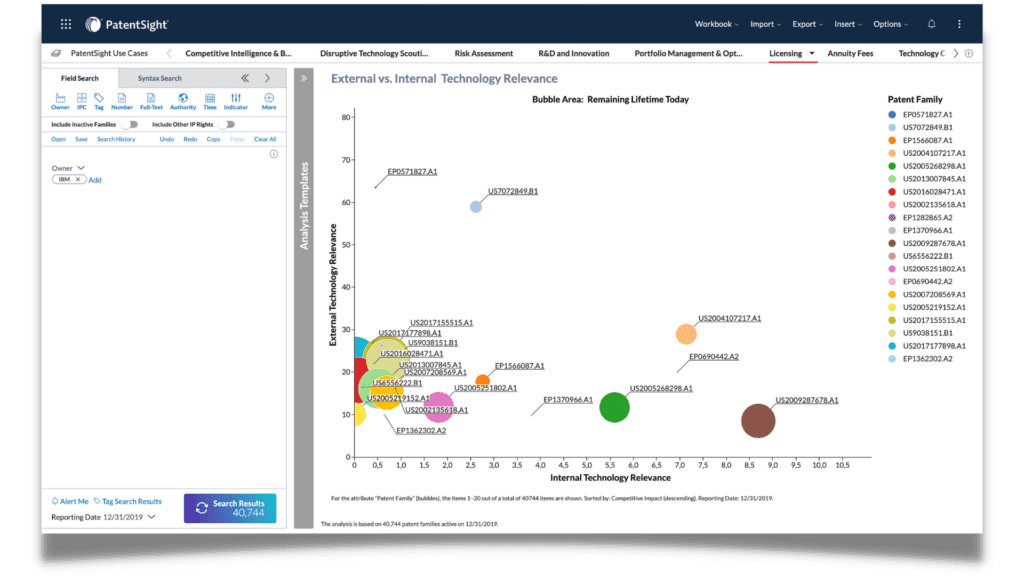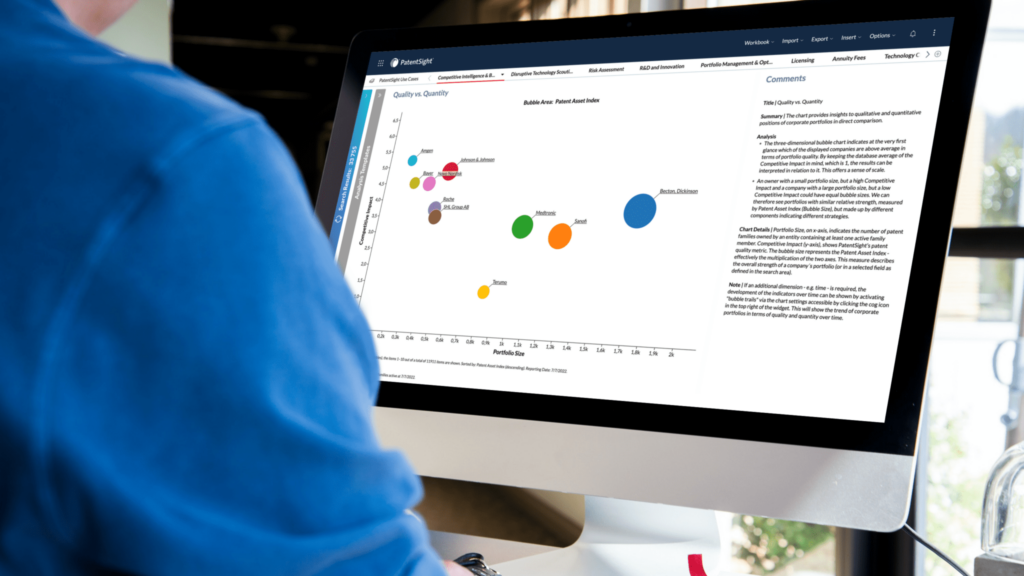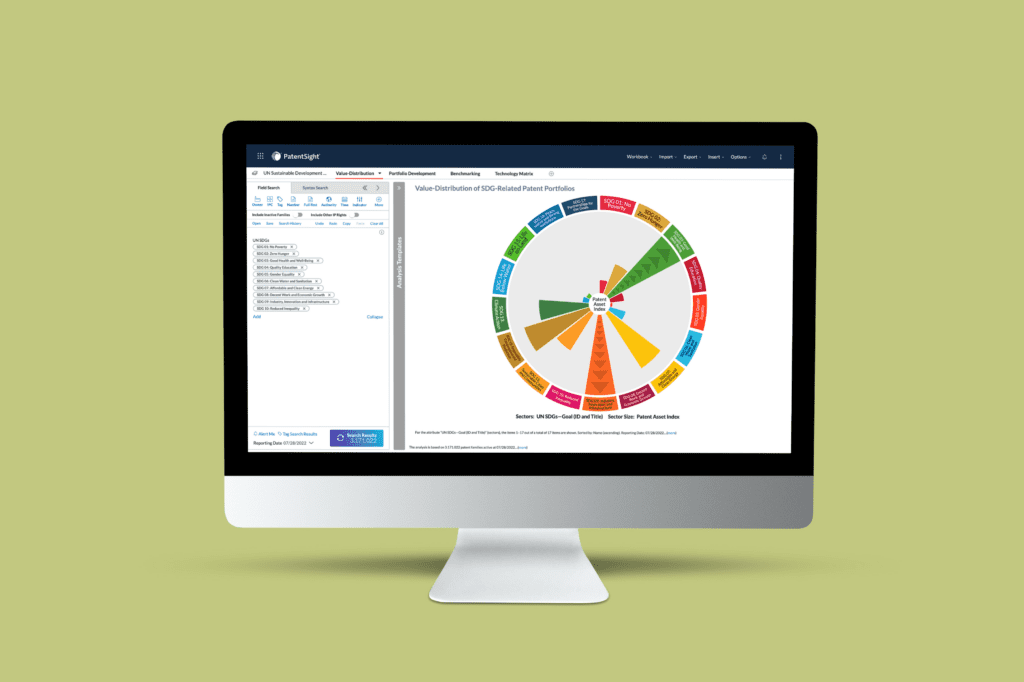
Identify Valuable Patent Licensing Opportunities
Evaluate the potential of any patent portfolio and identify the individual patents which are most attractive for licensing using LexisNexis® PatentSight+® patent analytics.

Get insights to support every licensing decision
With PatentSight+® and the Patent Asset Index, you can:
- Find your most valuable patents for licensing
- Identify potential licensees
- Pinpoint standard-relevant patents
- Determine your leverageable position

Leverage expert technical knowledge
Identify the companies that rely on your patents and protected technologies by analyzing prior art citations. Utilize the technical relationships identified by experts and leverage powerful analytical tools to even reveal players outside your own industry. Potential licensing targets can be profiled to gain deeper insight into their operations and potential willingness to pay.

Benefit from quality data harmonization
PatentSight+ also correlates patent data with information from standardization bodies like the European Telecommunications Standards Institute (ETSI) so it is easy to track standard relevant patents and their current owners.

Want to better understand China’s increasing dominance across the Engineering industry?
Download our Engineering intellectual property report, where data reveals clear trends about the future of Engineering and how international players are reacting to the growing Chinese influence.
Get insights into different Engineering sectors, including Aviation, Energy, Manufacturing Equipment, Railway and Ship Building, Civil Engineering, and more.
Unlock the true value of your portfolio
Learn how to profit from quality patent analysis.

We would love to get to know you and show you some invaluable insights into the IP landscape:
- Let’s have a conversation about your current priorities in IP analytics.
- Get an external view of your portfolio.
- Learn how others see you and survey other market players from a new perspective.
Submit the form, and we’ll be in touch.





